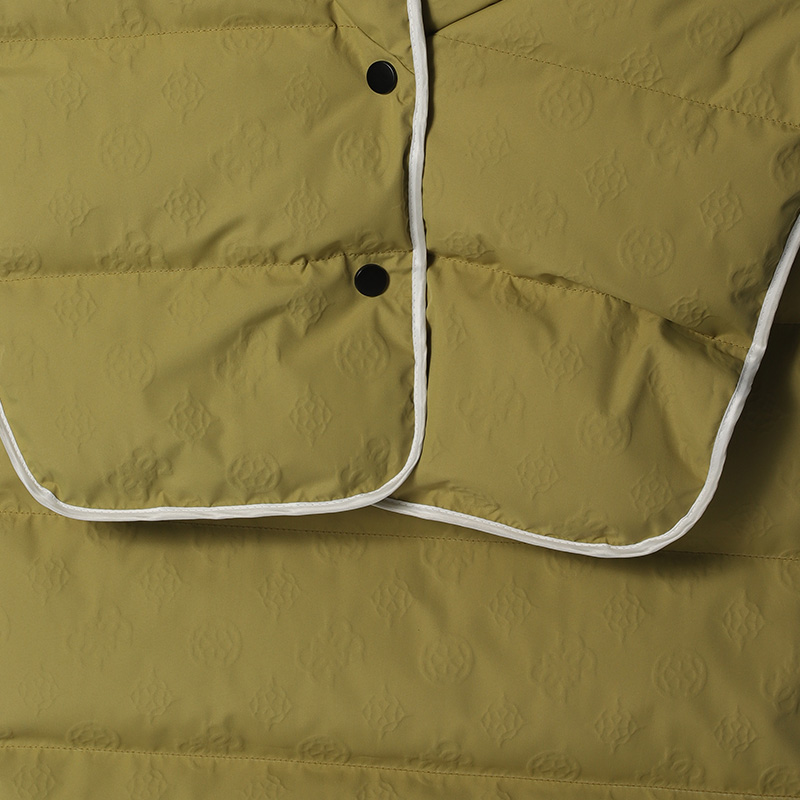When selecting technical outerwear fabrics, knowing the distinction between 2-layer and 3-layer constructions is critical for both performance and product positioning. These two lamination modes are often used in the creation of high-functioning garments such as down jackets, outdoor shells, and thermal wear. A fabric like Magic Crimple Tpu Jacket Fabric—recognized for its dimensional texture and fashionable appearance—can be customized in either form, but each structure has unique benefits based on its intended use and the environmental conditions it needs to withstand.
A 2-layer laminated fabric typically consists of a face fabric (such as 260T–420T polyester pongee) bonded to a waterproof-breathable TPU membrane. This structure leaves the inner side exposed, so an additional lining is usually required for comfort and durability. It's a flexible solution, widely chosen for its lightness and drape, making it especially suitable for fashion-forward jackets where softness and design versatility are important. In contrast, the 3-layer version adds a protective inner layer, bonding a tricot or mesh lining directly onto the membrane. This creates a self-contained fabric system that is more durable and less reliant on additional inner construction, ideal for rugged applications or minimalistic outerwear designs.
Performance-wise, 3-layer Magic Crimple Tpu Jacket Fabric offers superior protection in extreme environments. The additional layer reinforces the membrane, enhancing resistance to abrasion and delamination while maintaining breathability. It’s a popular choice in technical garments for men, women, and children who require high resistance to wind and moisture. On the other hand, the 2-layer version provides a good balance between comfort and protection, and it’s often favored by brands prioritizing fashion flexibility without sacrificing core waterproof and windproof performance.

The manufacturing decision between 2-layer and 3-layer comes down to a combination of application, price point, and branding needs. As a manufacturer and supplier with deep experience in the laminated polyester fabric segment, we often consult with our clients on choosing the right structure depending on whether they are developing city-ready outerwear or high-performance outdoor jackets. Both lamination modes can be used with our Magic Crimple Tpu Jacket Fabric, ensuring that your product lines benefit from both technical strength and aesthetic appeal.
Another key consideration is the weight and breathability of the final garment. While 3-layer constructions may be slightly heavier due to the added lining, they eliminate the need for an additional fabric backing, simplifying the production process. Meanwhile, 2-layer constructions, when paired with lightweight linings, can achieve comparable comfort at lower costs and with greater design flexibility. These technical trade-offs are central to garment development and should align with the end user’s expectations and the brand’s identity.
Importantly, when working with laminated fabrics like our Magic Crimple Tpu Jacket Fabric, consistency in quality and precision in bonding techniques are non-negotiables. We invest in modern lamination equipment and strict QC systems to ensure the integrity of each fabric layer, avoiding issues like membrane bubbling, uneven adhesion, or moisture leakage. Our clients rely on us not only for material supply but for process assurance and industry guidance throughout their development cycles.
Whether you're crafting a fashion-forward children’s jacket or a professional-grade adult shell, understanding the difference between 2-layer and 3-layer lamination will help you match the fabric’s construction to the garment’s function. With a wide range of customizable options, professional-grade lamination control, and years of export experience, we are proud to be a trusted partner for brands and manufacturers working with advanced textiles like Magic Crimple Tpu Jacket Fabric.


 English
English CN
CN













